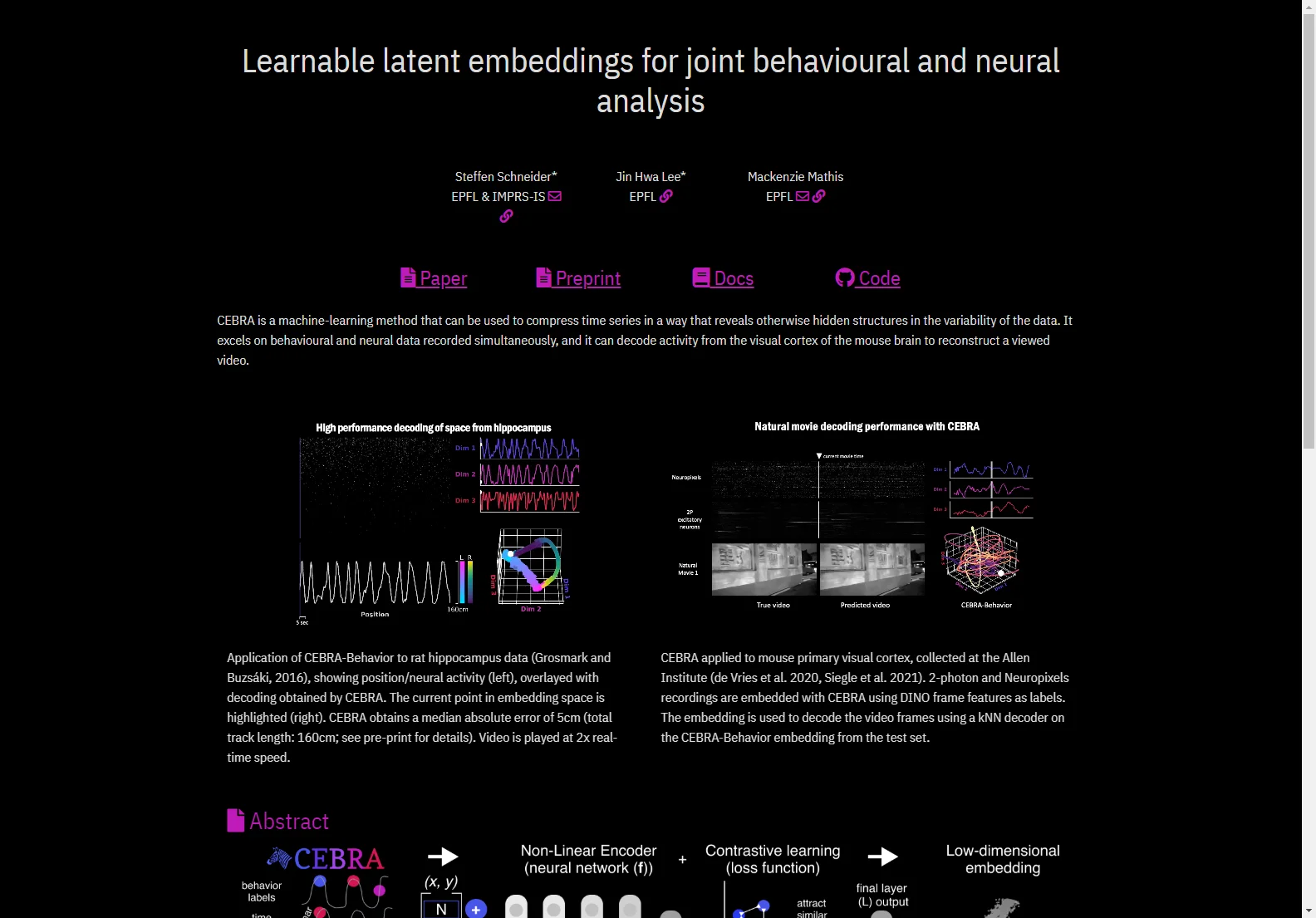Learnable Latent Embeddings for Joint Behavioral and Neural Analysis
This article explores CEBRA, a novel machine-learning method designed to analyze behavioral and neural data simultaneously. CEBRA excels at compressing time series data, revealing hidden structures in data variability. It's particularly useful for decoding neural activity to reconstruct events, such as reconstructing a viewed video from mouse visual cortex activity.
Key Features of CEBRA
- Joint Analysis: CEBRA uniquely analyzes behavioral and neural data together, providing a more comprehensive understanding of their relationship.
- Latent Space Generation: It creates latent spaces that represent both behavioral and neural data, revealing underlying correlations.
- Hypothesis-Driven and Discovery-Driven Modes: CEBRA can be used in both supervised (hypothesis-driven) and self-supervised (discovery-driven) manners, offering flexibility in analysis.
- Consistency Metric: The consistency of the latent space serves as a metric for identifying meaningful differences in the data.
- Decoding Capabilities: The generated latent spaces can be used for decoding, such as reconstructing videos from neural activity.
- Versatile Application: CEBRA works with various datasets, including calcium imaging and electrophysiology data, across different species and behavioral tasks.
- Handles Multi-Session Data: It can effectively integrate data from multiple sessions for more robust analysis.
- High Accuracy and Speed: CEBRA provides rapid and accurate decoding, as demonstrated by its application to visual cortex data.
Applications and Use Cases
CEBRA has shown promising results in several areas:
- Spatial Mapping: It can map spatial information, uncovering complex kinematic features from behavioral data.
- Decoding Neural Activity: Successfully decodes video frames from mouse visual cortex activity with high accuracy.
- Cross-Dataset Consistency: Produces consistent latent spaces across different data types, such as 2-photon and Neuropixels recordings.
Comparisons with Other Methods
While other methods exist for analyzing neural and behavioral data, CEBRA distinguishes itself through its ability to jointly analyze both data types in a non-linear manner, producing consistent and high-performance latent spaces suitable for decoding. This allows for a more nuanced understanding of the interplay between neural activity and behavior than traditional methods which often treat these data streams separately.
Conclusion
CEBRA offers a powerful new tool for neuroscience research, enabling more comprehensive and insightful analysis of behavioral and neural data. Its flexibility, accuracy, and ability to handle diverse datasets make it a valuable asset for understanding the neural basis of behavior.
